Riga, the capital of Latvia
is the largest city in the Baltic States with over 700,000 inhabitants. The old Hanseatic city looks back on an extremely eventful history and is today famous for its Art Nouveau buildings and for the well-preserved city centre.
Let's start the sightseeing tour in the old town on Liven Square with the guild houses.
At Liven Square in Riga
Click on the small pictures!
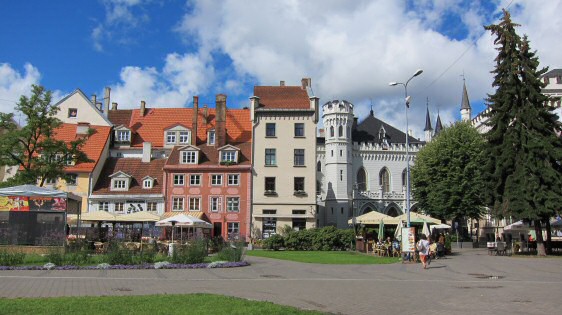





Passing the Wagner Concert Hall (he writes himself "Riharda Vagnera" here) we come through narrow alleys to St. Peter's Church.
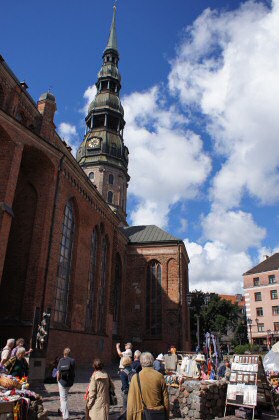
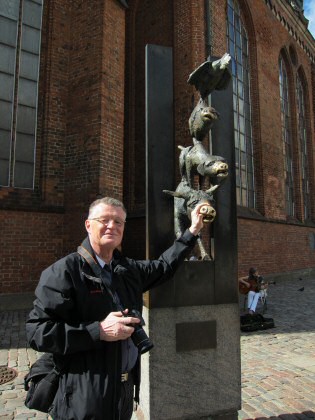
St Peter's Church
is the tallest Latvian church and one of Riga's landmarks; its slender tower rises 123 metres into the air and is inseparable from the city's silhouette. At a height of 70 metres is a platform that can be reached by lift. From here you can enjoy a magnificent view far beyond the old town.
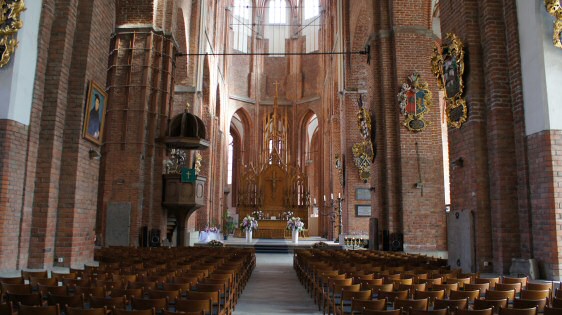
View of St Peter's Church
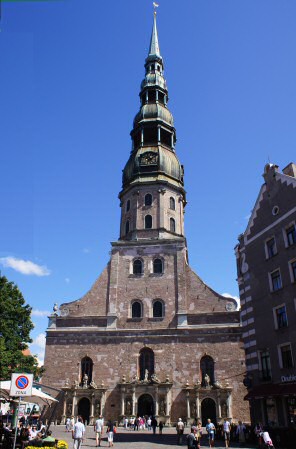
St Peter's Church (The Petri Church) in full size.
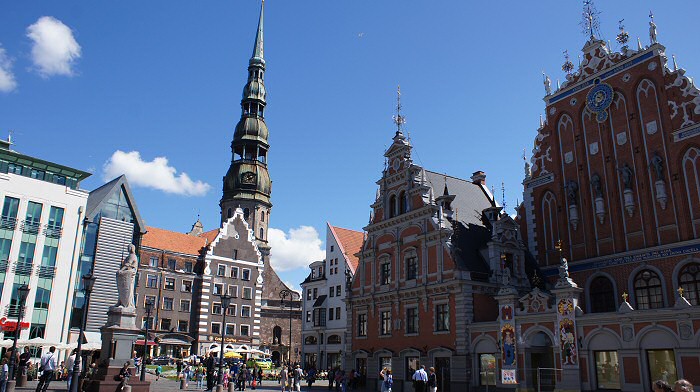
We are on Town Hall Square. On the right is the Gothic Blackhead House, the former meeting place of Riga merchants. Unfortunately it burnt down during the war and was rebuilt in the 1990s. The statue of Roland in the centre of the square is also only a copy.
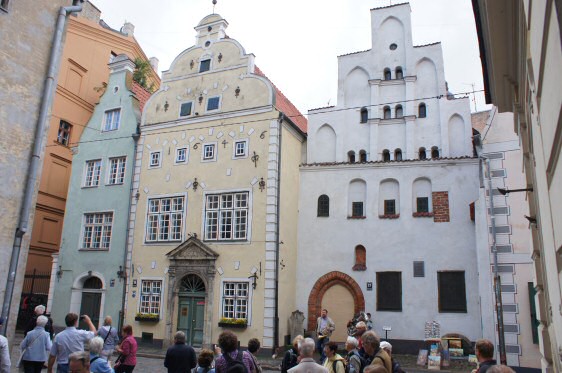
These allegedly oldest dwellings in Riga are called the Three Brothers. The oldest house (No. 17) dates from the 15th century.
Jugendstil in Riga
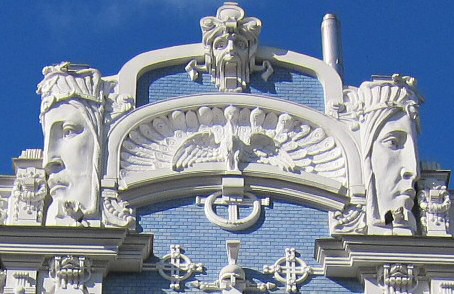
Art Nouveau houses in Riga: Click on the small pictures!








Riga, one of the metropolises of Art Nouveau, stands in a row with other cities in Europe such as Vienna, Paris or Budapest.
For comparison, a picture from Vienna (Wienzeile). The Riga "school" of Art Nouveau was initially inspired by corresponding buildings in Vienna and in some German cities. Later, Finnish influences were added, resulting in a Nordic Art Nouveau style.
 The most magnificent Art Nouveau buildings in Riga are found in a neighbourhood
around Alberta iela (Alberta Street). Many of the houses in this and some surrounding streets were created by the architect Mikhail Eisenstein (1867 - 1921).
The most magnificent Art Nouveau buildings in Riga are found in a neighbourhood
around Alberta iela (Alberta Street). Many of the houses in this and some surrounding streets were created by the architect Mikhail Eisenstein (1867 - 1921).
At the end, we recovered from the sightseeing tour in a Riga café.

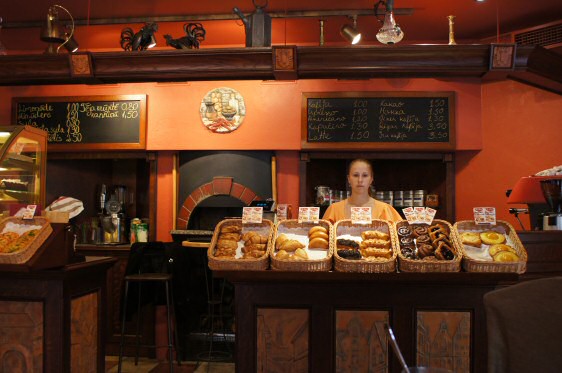
History of Riga and Latvia
The first people to settle here were German merchants and 1201 is considered the official year of Riga's foundation. In 1282 the city became a member of the Hanseatic League. For a long time, Riga's history was also marked by armed conflicts in various constellations between the knights of the Teutonic Order, the archbishop and the city's bourgeois merchants.
In 1562, the abdication of the Master of the Order, Gottfried Kettler, marked the beginning of a twenty-year period of independence for the city before it fell under Polish rule. A war lost by Poland against Sweden brought Riga under Swedish rule from 1621 and again under Russian rule in 1710 after Russian-Swedish wars. Further expansion of trade with Riga as a railway junction and Baltic port and later industrialisation led to continued growth of Riga to a population of almost 500,000 before the start of the First World War. This made Riga the second largest city in western Russia after St. Petersburg.
The course of the war and the revolutions in Russia and Germany gave Latvia its first chance to establish an independent republic, which was proclaimed in Riga in 1918. However, the Second World War, as a result of the Hitler-Stalin Pact, ended this brief phase of Latvian independence and the period of Soviet hegemony began. As a result, many Russians settled in Riga and the city became a centre of military-industrial production within the Soviet Union.
The upheaval in the Soviet Union and in Eastern Europe also led to an independence movement in Latvia, and on 21 August 1991 Latvia became an independent and democratic republic. This was followed by the gradual withdrawal of Russian troops from Latvia and a westward orientation of Latvian politics. In 2001, Riga celebrated its 800th anniversary. In 2004, Latvia, like its two Baltic neighbours, joined NATO and the European Union.